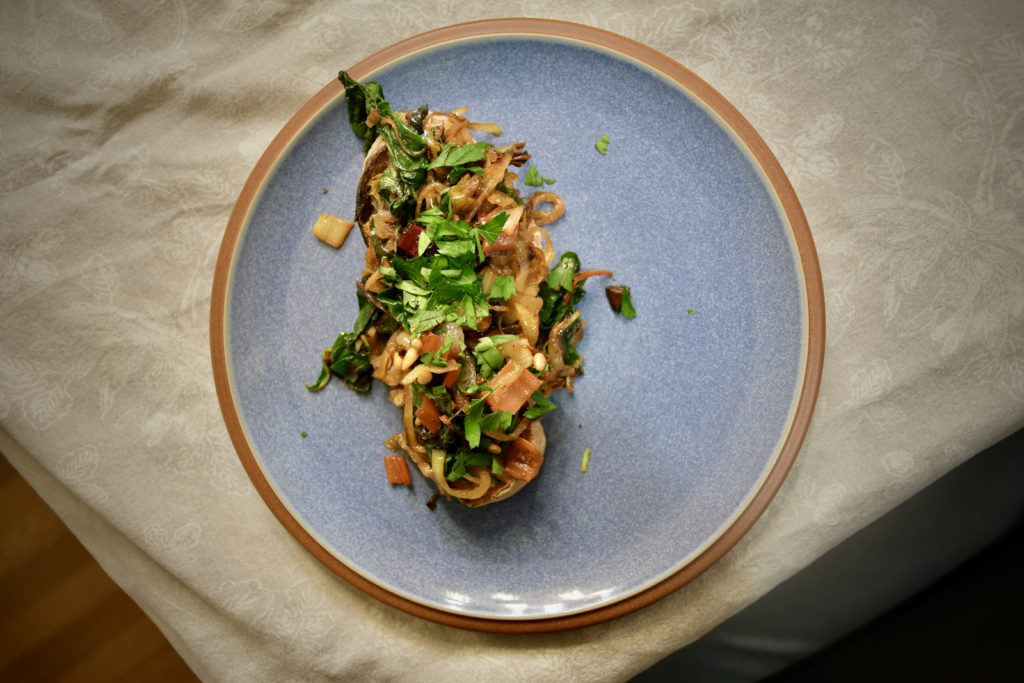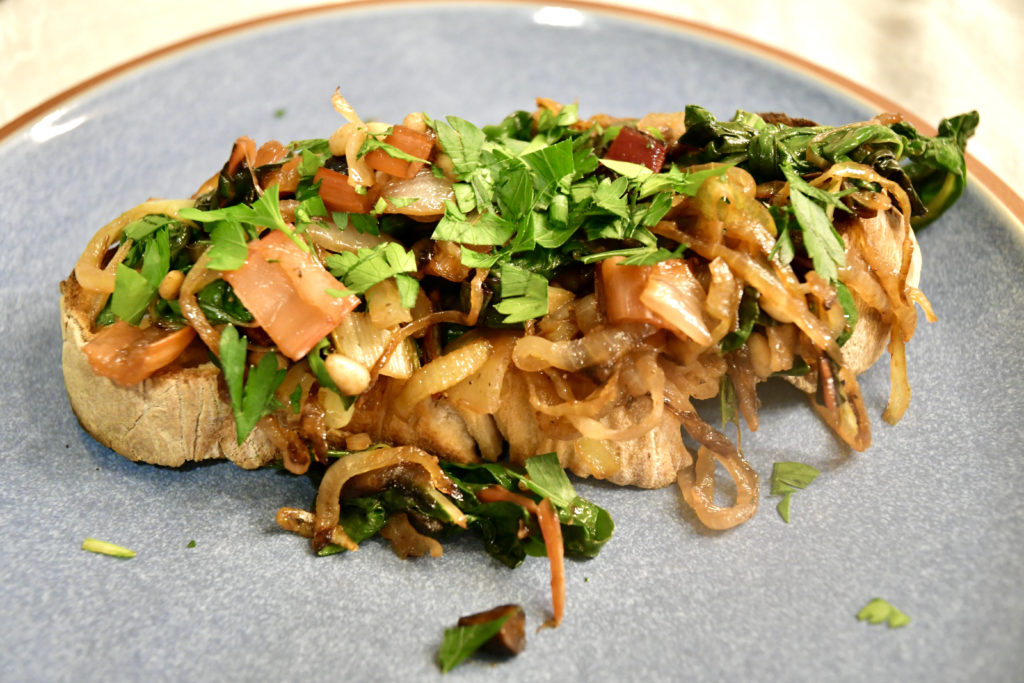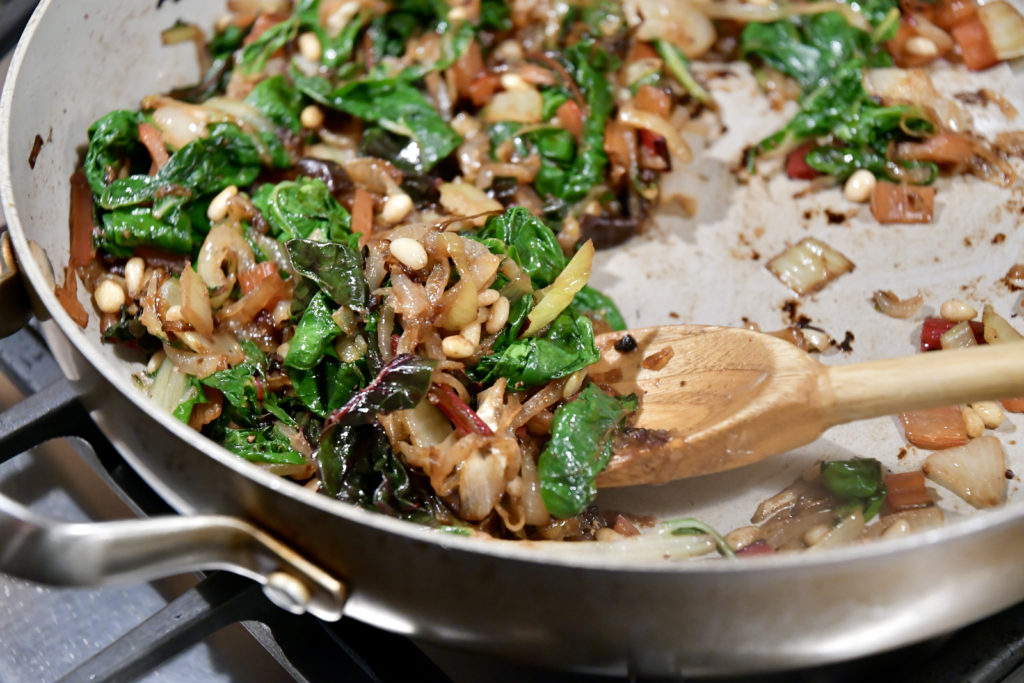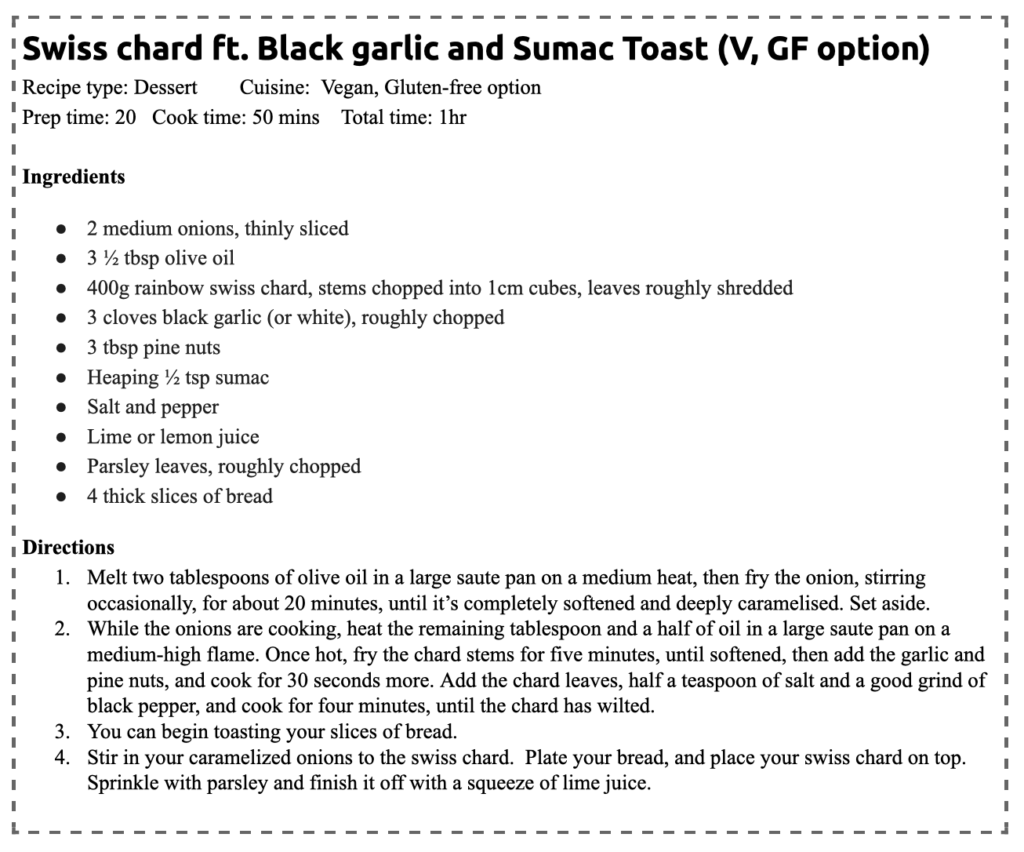I am under no impression that I can turn a hard-core leafy green hater into a fan. But that doesn’t mean I will not try. May I propose this recipe as a way to start?

Just picture eating this: strings of caramelized onions jeweled with creamy pine nuts and tangy sumac (more on that later), weaved in with sautéed Swiss chard on top of a crusty bread.
ABOUT THE BREAD
2020 marked a return to civilization’s most revered food staple: bread, particularly sourdough bread. I recently discovered that one of my favorite bread bakers from London also has a location in New York City. So during winter break, I masked up and dropped in to Fabrique Bakery to pick up an entire loaf of my favorite levain bread along with other goodies like a fig walnut loaf and an apricot hazelnut one. Levain bread (levain meaning leaven in French) is an off-shoot of sourdough starter, and it’s a mixture of fresh flour, water, and some ripe starter meant for a one-time use. I borderline robbed the store, and now my entire freezer is a shrine dedicated to Fabrique. I decided to honor the special levain bread by making a gourmet toast, and with appeasing non-green palates on my mind, I decided to top the Swiss chard onto a nice thick slice. After all it’s hard to not like some thing with bread.
For strictly gluten-free people, this gluten-free focaccia looks super yummy, but you can just as easily pair this dish with another gluten-free sandwich bread, wild rice, or quinoa.

So let’s get down to some of the nutrition:
- Swiss chard. One cup of chopped Swiss chard has just 35 calories and provides more than 300% of the Reference Daily Intake (RDI) for vitamin K and 214% of the RDI for Vitamin E. Swiss chard’s many antioxidants include polyphenols, vitamin C, vitamin E and carotenoid plant pigments, such as beta-carotene. These nutrients help protect cells from free radical damage, which manifests via pollution, pesticides, smoke, and more.
- Olive oil. Vitamins A, D, E, and K are fat-soluble, meaning in order to reap the benefits and absorption of Swiss chard, fat is required. This is why pairing vitamin D-rich foods with a high-quality fat, like olive oil, flax seeds, avocado, fish, chia seeds, or nuts is important. The predominant fatty acid in olive oil is a monounsaturated fat called oleic acid (73% of oil content), and studies suggest that oleic acid reduces inflammation. The main anti-inflammatory come from the antioxidants, particularly oleocanthal, which has been shown to work similarly to ibuprofen, an anti-inflammatory drug, according to a study.
- Pine nuts. This may come as a surprise, but pine nuts are packed with 3 mg of iron per one ounce serving. Iron is a key component of hemoglobin, the oxygen-carrying pigment in blood that supplies energy to the body. The copper pine nuts contain also helps the body to absorb more of the iron. These incredible nuts also contain the antioxidant lutein, which can significantly help with the prevention of eye diseases such as macular degeneration and cataracts.
- Lime juice. Vitamin C enhances your absorption of iron.
- Parsley. Who would’ve thought of little old parsley? The herb is rich in many vitamins, particularly vitamin K, which is needed for blood clotting and bone health. Parsley is also a great source of vitamins A and C — important nutrients with antioxidant properties.

A SPOTLIGHT ON BLACK GARLIC AND SUMAC
- Black garlic. This ingredient is rather new to me, as I expect it may be for you. Black garlic is comes from fresh (white) garlic via fermentation, in which the peeled cloves are placed in a chamber at a set temperature (60–90°C) and humidity (70–90%). Black garlic is rich in antioxidant compounds such as polyphenols, flavonoids, and organosulfur compounds. Studies indicate that black garlic has many therapeutic effects including, anti-obesity, hepatoprotective, and neuroprotective effects.
- Sumac. Sumac is a popular Middle Eastern spice that was introduced to me by Yotam Ottolenghi’s cookbooks. Sumac is made from the dried and ground berries of the wild sumac flower, and has a tangy flavor similar to lemon. It is both sweet and sour at the same time, adding another dimension to this dish. Interestingly, as far back as 2,000 years ago, sumac was noted for its healthful properties, namely as a diuretic and anti-flatulent, by Roman Emperor Nero’s physician, Pedanius Dioscorides.
Have I sold you yet on the deliciousness and healthfulness of this dish yet? Try it yourself to find out.
